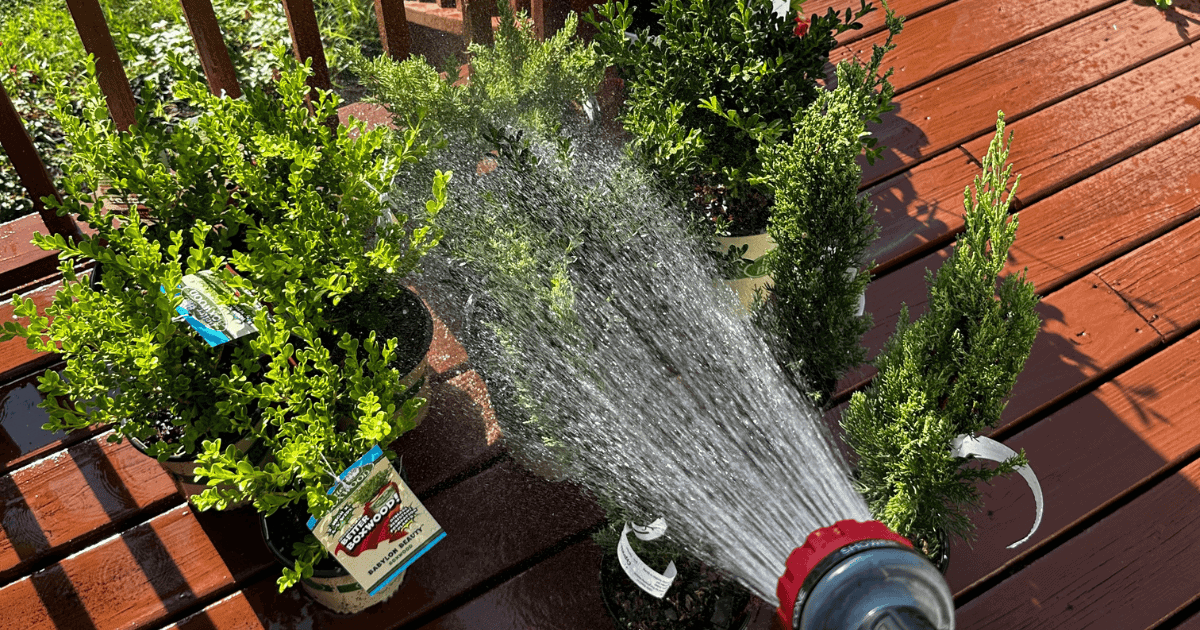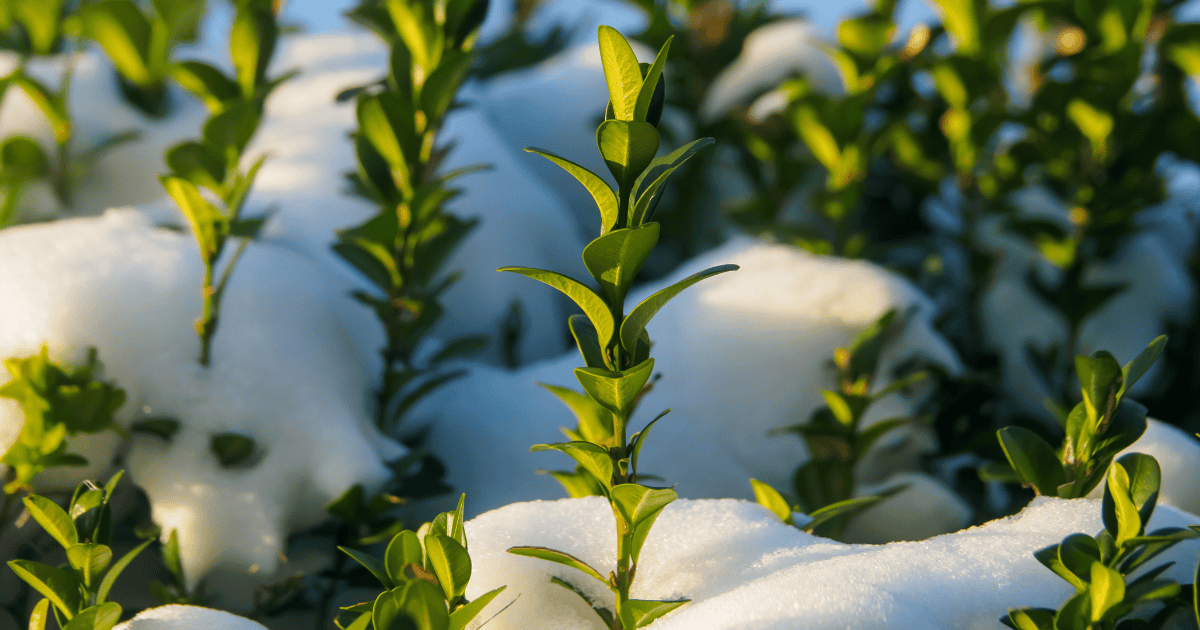
Our boxwoods are known for their evergreen foliage and versatile growth habits, but they need the right amount of moisture to reach their full potential. In this guide, we’ll dive into Watering 101, offering tips to ensure your Better Boxwoods receive just the right amount of hydration. From understanding your soil's needs to the best time of day to water, we're here to help you cultivate a stunning landscape with ease. Let's get started on your journey to becoming a watering pro!
Watering Boxwood Plants in Containers
Boxwoods are a popular container plant thanks to their evergreen foliage and ease of maintenance. Your boxwood topiary and other container plants need a little extra attention than their counterparts in the ground. The soil in containers and planters dries out more quickly than garden soils, so you need to irrigate them more often.
Check soil moisture in boxwood containers daily using your finger or a soil probe. You want to keep the soil moist, but not wet. If the upper inch of soil is dry, you need to water. Many container plants need to be watered daily during the heat of summer. You can reduce irrigation to 2 to 3 times per week in the spring and fall, as temperatures are more moderate. In winter, check containers weekly and water as needed to keep the soil moist. Adjust your watering schedule to account for rainfall.

How to Water Boxwood Plants
Water boxwood plants slowly and deeply when needed. Deep irrigation encourages healthier root systems that can better withstand periods of drought. Allow irrigation to run long enough to wet soils to a depth of six to twelve inches and reduce irrigation frequency so that the upper layer of soil dries between watering. The dry period forces plants to send out roots in search of water, thus expanding their root system.
Drip irrigation is the best way to apply water slowly. Drip systems deliver water directly to the root area where it’s needed, which keeps water off foliage. While Better Boxwood varieties are blight-resistant, many other boxwoods are susceptible to this disease which flourishes on wet foliage. Drip hoses are a great way to irrigate boxwood hedges and foundation plantings. Use spot emitters for containers or isolated plants in the garden. If you do not have a drip system, a soaker hose can also work well.

Reduce Irrigation in Winter
Boxwood plants grow actively from mid-spring through fall. As cold weather returns, plants use less water and require less frequent irrigation. However, plants will still develop roots when soil temperatures remain above 40˚F. Boxwoods also transpire water through their evergreen foliage all winter long. Dry winter wind can be particularly problematic for boxwoods, causing bronzing in many varieties.
Monitor soil moisture monthly and irrigate as needed to ensure the soil does not dry out completely during the winter months. Moist soil also helps insulate plant roots against extreme cold. When severe weather is predicted, thoroughly water newly planted boxwoods and those susceptible to winter damage before the ground freezes.

Mulch Boxwood Plants
Boxwood shrubs benefit from a layer of mulch to protect their shallow root systems. Organic mulches such as wood chips or pine straw help to moderate soil temperatures and conserve soil moisture. Mulch boxwoods with a two- to three-inch layer of mulch, extending the layer at least one foot beyond the canopy of the plant to protect the wide root system. Take care not to pile mulch against the stems or trunk of the plant.


